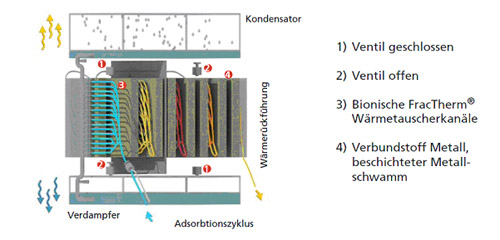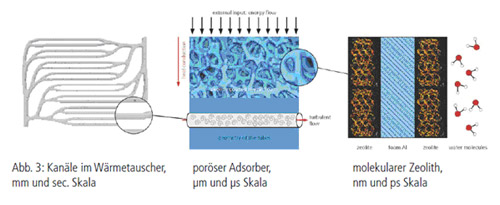The goal of the Fraunhofer internal project THOKA was the development of adsorption cooling devices with enhanced performance characteristics based on cheap energy resources like the sun of the excess heat of processes. This project is a joint effort of the Fraunhofer institutes ISE, IFAM-DD, IFAM-HB, IVV and ITWM. The ITWM supports the development effort by optimization techniques utilizing virtual models of the corresponding energy conversion processes.
The main goal of the project is the Improvement of the power density of adsorption devices by the development of a new generation of the adsorber technology. The key characteristics are 100 W per liter of the volume and simultaneously an improved coefficient of performance (above 0.6). Possible applications of this technology are transport cooling, vehicle air conditioning and solar cooling of buildings.



